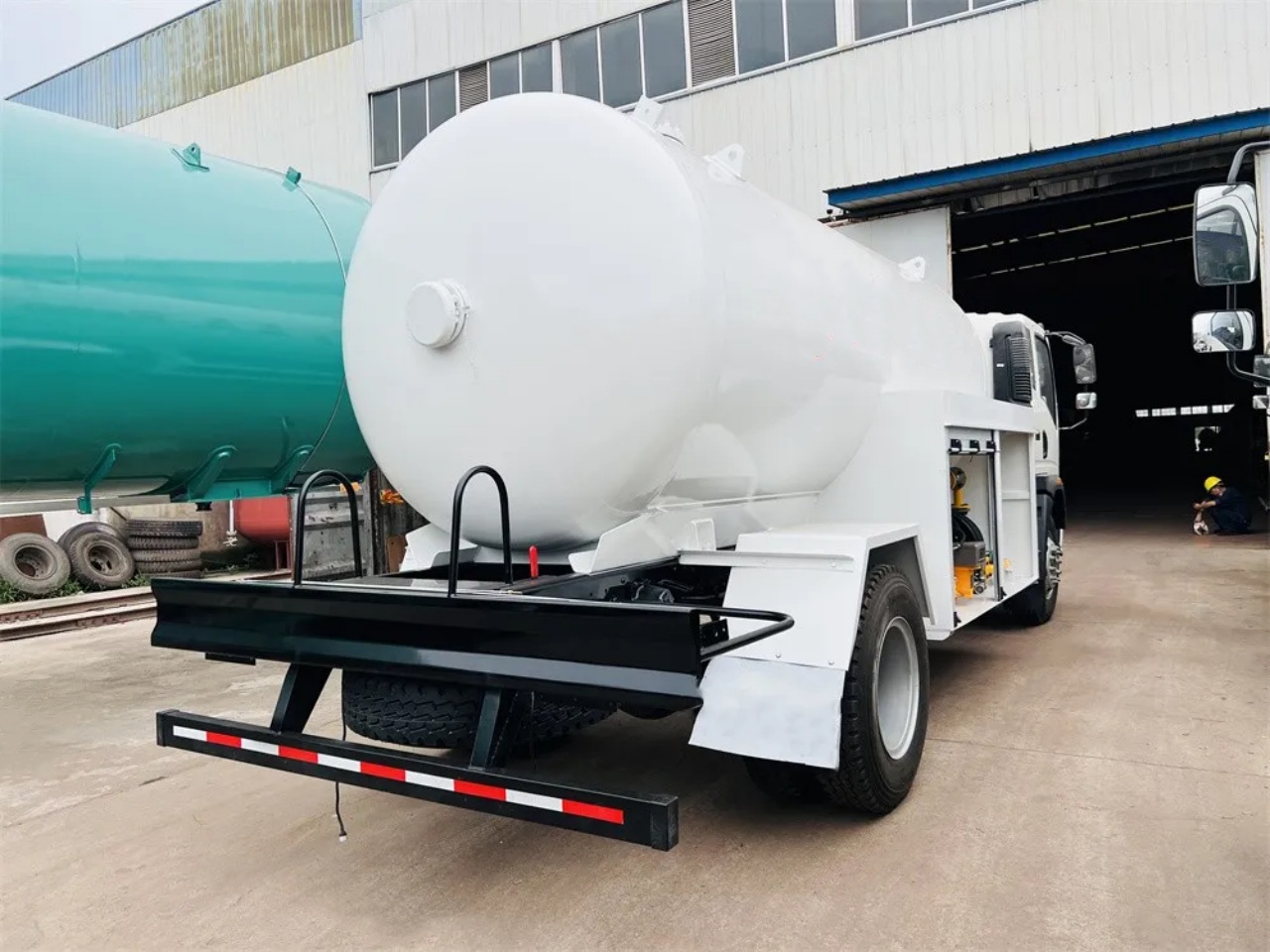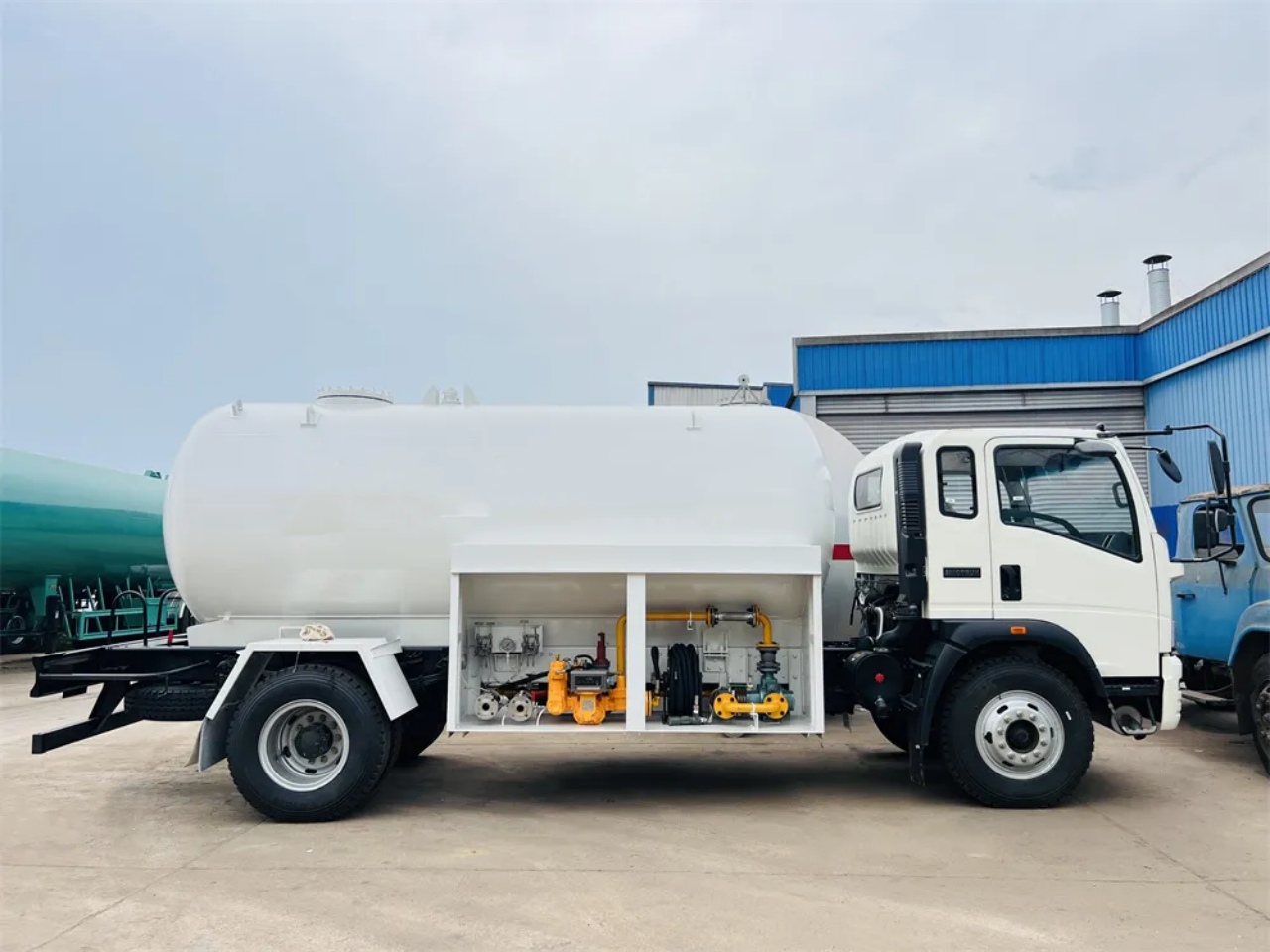Propane is one of the most commonly used fuels in the United States, serving both residential and industrial needs, including heating, cooking, and even fueling vehicles. It’s delivered via tanker trucks, which are designed to safely and efficiently transport this flammable liquid to various destinations. When considering the capacity of a propane tanker truck, it’s essential to account for both the physical volume the truck can carry and the nature of propane itself, which is typically stored under pressure in liquid form.
This article will delve into the capacity of propane tanker trucks, explore the factors that determine this capacity, and discuss how propane is handled during transport.
The Basic Capacity of Propane Tanker Trucks
A typical propane tanker truck can carry anywhere from 5,000 to 12,000 gallons of liquid propane, depending on the size of the truck and the specific configuration of the tank. For comparison, the average propane tanker truck is usually in the range of 10,000 gallons in capacity, although there are larger and smaller models used for different applications.
To understand why the variation exists, it’s essential to consider the different types of propane tanker trucks. Smaller trucks, often used for residential deliveries, may hold closer to 5,000 gallons. These are commonly used to transport propane to homes or small businesses that require less frequent refills. On the other hand, larger trucks, often employed for bulk industrial deliveries or filling large storage facilities, can hold up to 12,000 gallons or more.

How Propane is Stored in Tanker Trucks
Propane, which is primarily composed of C3H8, is a colorless, odorless gas at standard temperature and pressure. However, for transportation purposes, propane is usually stored in liquid form. This is achieved by compressing the gas to a high pressure or by cooling it to below its boiling point of -42°F (-42.2°C), which turns it into a liquid at normal atmospheric pressure.
In a propane tanker truck, the liquid propane is stored in large cylindrical tanks that are specifically engineered to withstand the pressures of transporting pressurized gas. These tanks are equipped with safety valves, pressure gauges, and other mechanisms to ensure safe operation.
The capacity of the tank is typically measured in gallons or pounds. However, the volume of propane in the tank will depend on how it’s stored:
- Pressure and Temperature: The pressure inside the tanker tank can vary depending on the external temperature. Propane is stored at about 200 to 300 psi (pounds per square inch) to maintain its liquid state.
- Liquid vs. Gas State: If propane were in its gas form at room temperature and pressure, it would require much more space. Therefore, the liquid form is the most efficient for transport. For example, 1 gallon of liquid propane weighs approximately 4.2 pounds and contains about 27,000 BTUs of energy.
Factors Affecting the Total Propane a Tanker Can Carry
Although a propane tanker truck might be rated to carry 10,000 gallons, the actual amount of propane it can transport depends on various factors, including the temperature, the pressure of the propane, and the design of the truck’s tank.
- Legal and Regulatory Restrictions: Each state or country has its regulations regarding the maximum amount of propane that can be safely transported. These regulations are based on safety considerations, including the possibility of accidents or spills. For example, in the United States, the Department of Transportation (DOT) sets limits on the amount of hazardous material that can be transported.
- Truck Size and Design: The actual dimensions of the tanker will determine how much propane it can hold. Tanker trucks come in various sizes, from smaller single-axle vehicles to large multi-axle rigs. Larger trucks can hold more propane, but they may also require special permits or need to comply with additional safety requirements.
- Safety Margin and Empty Space: Propane tanks are not always filled to their maximum capacity. A safety margin is maintained to account for thermal expansion, which can occur if the temperature increases during transit. This expansion is why tanks may be filled only to about 80-85% of their total capacity. For example, a truck rated to carry 10,000 gallons of propane may only be loaded with around 8,000 gallons to account for this expansion.
- Tank Material and Thickness: The thickness of the walls of the propane tank also plays a role in how much propane it can hold. Tanks are made from high-strength steel or aluminum to withstand the high-pressure conditions. The wall thickness can affect the weight of the tank and, consequently, the overall payload capacity of the truck.
- Load Distribution: Proper load distribution is crucial for the stability and safety of the tanker truck. When transporting propane, the liquid must be evenly distributed inside the tank. Special baffles or partitions are often used inside the tank to prevent sloshing and ensure the liquid remains stable during transit. The tank’s design, including how the liquid is compartmentalized, can affect the total weight and capacity of the truck.

The Process of Loading and Unloading Propane
The process of loading propane onto a tanker truck involves transferring the liquid propane from a bulk storage facility or propane tank into the truck’s storage tank. This process is highly controlled, involving pumps, hoses, and safety valves to ensure that the transfer is safely and efficiently completed. Additionally, the truck must be properly grounded to prevent any build-up of static electricity, which could result in a dangerous spark.
When the truck reaches its destination, the unloading process follows similar precautions. The liquid propane is transferred from the truck’s tank to the storage tank of a business, industrial facility, or residential area. Depending on the delivery, vapor recovery systems may be employed to capture any escaping gas during the transfer process to prevent contamination or emissions.
Conclusion
A propane tanker truck can hold between 5,000 and 12,000 gallons of liquid propane, with most trucks falling into the range of about 10,000 gallons. The exact amount that a tanker truck can carry depends on various factors, including truck size, legal regulations, and safety measures. The process of transporting propane is complex, requiring careful attention to the liquid’s storage under pressure, temperature control, and regulatory compliance.
By understanding the capacity of propane tanker trucks and the precautions taken during transport, it’s clear that this essential fuel is delivered safely and efficiently across the country to support heating, cooking, and industrial needs.


